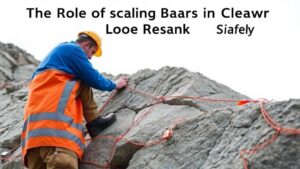Understanding Geological Fault Zones and Their Role in Gold Localization
Understanding Geological Fault Zones and Their Role in Gold Localization
Geological fault zones, often characterized by fractures or zones of weakness in the Earths crust, play a significant role in the formation and localization of mineral deposits, particularly gold. Understanding these geological features is crucial for mining industries, geologists, and investors alike, as fault zones can serve as conduits for mineralizing fluids and facilitate the concentration of valuable minerals, including gold.
What are Geological Fault Zones?
Geological fault zones are fractures in the Earths crust where there has been displacement of rock on either side of the fault line. These zones can be categorized into several types based on their orientation and the manner in which they move:
- Normal faults: Occur when the crust is extended.
- Reverse faults: Arise in compressive environments.
- Strike-slip faults: Characterized by horizontal movement.
Each type of fault zone creates unique geological environments that can influence the movement of fluids and the deposition of minerals. For example, a reverse fault can create a space that allows mineral-rich solutions to precipitate, thus forming ore deposits.
The Process of Mineralization
Gold localization typically occurs through a process known as mineralization, wherein mineral-rich fluids percolate through the fault zones. The following steps outline this process:
- Fluid Movement: Minerals dissolved in water can be transported through the rock formations along fault lines.
- Reduction in Pressure: As these fluids migrate upwards through the crust and experience reduced pressure, the solubility of gold decreases.
- Precipitation: Gold and other minerals precipitate out of the solution, accumulating in the surrounding rock.
This process can be enhanced under certain conditions, such as the presence of certain host rocks which interact with the mineralizing fluids, thereby altering their properties and promoting gold deposition.
Case Studies of Gold Localization
Several notable case studies illustrate the link between fault zones and gold localization:
- Carlin Trend, Nevada: This area is famous for its extensive gold deposits, which are believed to be localized by numerous fault systems. The complex interplay of faults, along with the presence of certain rock types, has led to the creation of world-class gold ores.
- Pueblo Viejo, Dominican Republic: The mining operations in this region are closely tied to a network of faults which control the fluid pathways that carry gold. e fault-controlled mineral deposits account for a significant portion of the mines output.
Both examples highlight how the structural complexity of fault zones can significantly influence gold localization, underscoring the importance of geological mapping and fault analysis in exploration efforts.
Implications for Exploration and Mining
Understanding the relationship between fault zones and gold localization has profound implications for exploration and mining strategies. By focusing on fault zones, geologists can enhance their chances of locating economically viable gold deposits. The implications include:
- Enhanced Targeting: Exploration efforts can be directed towards identified fault lines and their intersections.
- Improved Resource Management: By understanding the zones, miners can better manage extraction while reducing environmental impacts through targeted drilling.
Utilizing advanced geophysics and geological mapping can further refine exploration techniques, enabling companies to not only locate gold more efficiently but also to responsibly conduct their operations.
Conclusion
Geological fault zones are central to the natural processes that lead to gold localization. By comprehensively understanding these dynamic structures, geologists and mining companies can enhance their exploration efforts and contribute to a more sustainable mining practice. As the demand for gold persists in various industries, effective strategies built upon geological knowledge will be crucial for resource extraction in the future.



